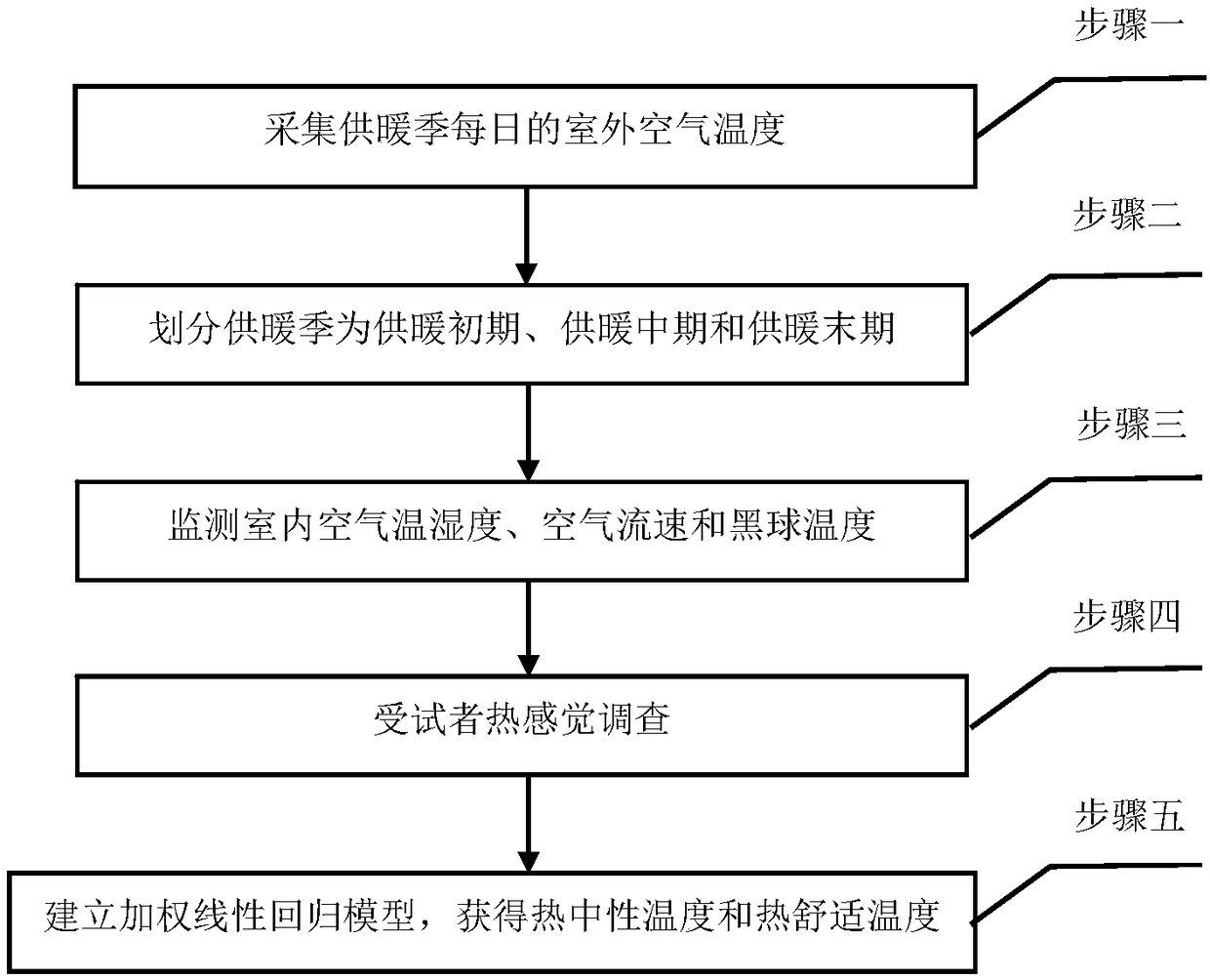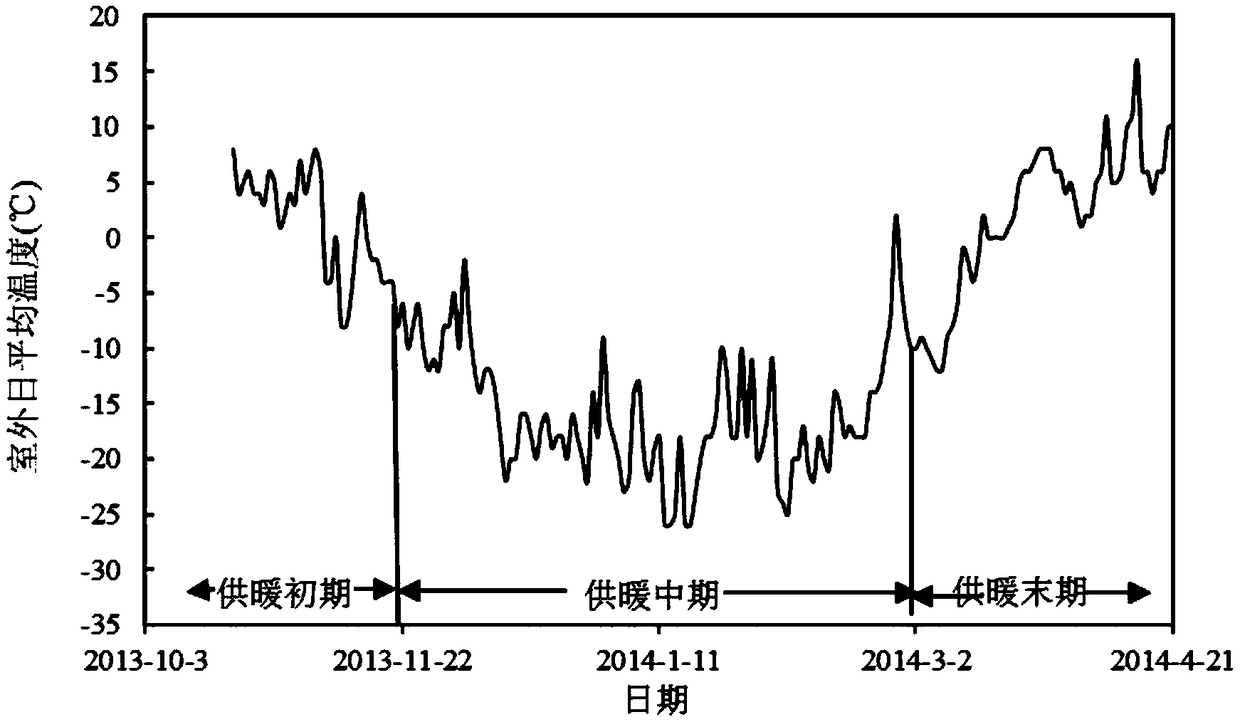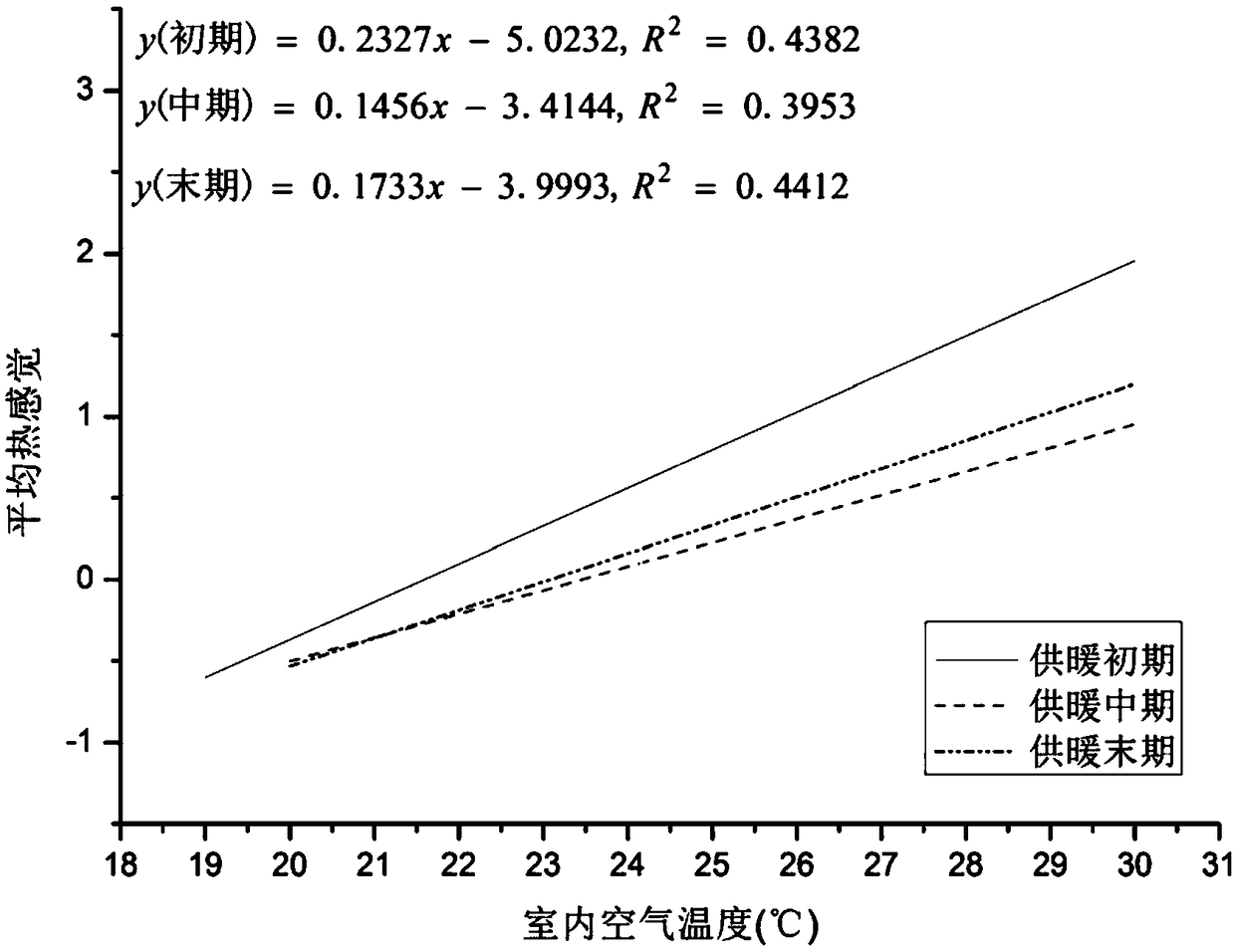Predicting method of thermal-adaptability-based winter indoor thermal comfortable temperature in severe cold area
A prediction method and adaptive technology, applied in heating methods, applications, household heating, etc., can solve the problems of inaccurate comfort temperature prediction and large heating energy consumption, and achieve a reasonable thermal comfort temperature range and reduced heating energy consumption. Effect
- Summary
- Abstract
- Description
- Claims
- Application Information
AI Technical Summary
Problems solved by technology
Method used
Image
Examples
specific Embodiment approach 1
[0018] Specific implementation mode one: as figure 1 As shown, the method for predicting indoor thermal comfort temperature in severe cold regions in winter based on thermal adaptability described in this embodiment, the method specifically includes the following steps:
[0019] Step 1. Collect the daily average outdoor air temperature during the heating season in severe cold areas;
[0020] Step 2: Divide the heating season into three stages: the early stage of heating, the middle stage of heating, and the end stage of heating according to the daily average outdoor temperature changes in the heating season;
[0021] Step 3. During the heating process, the indoor air temperature and the relative humidity of the indoor air are continuously monitored, and the indoor air velocity and the indoor black ball temperature are intermittently tested;
[0022] Step 4. According to the thermal response voting scale in the thermal comfort standard, conduct a subjective survey on the therm...
specific Embodiment approach 2
[0025] Specific implementation mode two: the difference between this implementation mode and specific implementation mode one is: the specific process of step two is:
[0026] According to the daily outdoor average temperature changes in the heating season, the heating season is divided into three stages: the early stage of heating, the middle stage of heating and the end stage of heating;
[0027] The outdoor daily average temperature of the sliding 5-day average is used as the division index;
[0028] If the 2 consecutive sliding 5-day averages on a certain day are all lower than 5°C, it will enter the initial heating period;
[0029] After entering the early stage of heating, if the average value of two consecutive sliding 5 days on a certain day is lower than -10°C, it will enter the middle stage of heating;
[0030] After entering the middle stage of heating, if the average value of 2 consecutive 5-day sliding on a certain day is not lower than -10 ℃, it is judged to ent...
specific Embodiment approach 3
[0031] Specific embodiment three: the difference between this embodiment and specific embodiment two is that in step three, the indoor air flow rate and the indoor black ball temperature are intermittently tested, and the specific method is: test the indoor air flow rate and the indoor For the temperature of the black ball, the test time for each indoor air flow rate is 3 to 5 minutes, and the test time for each indoor black ball temperature is 10 to 20 minutes.
[0032] The environmental parameters of the field test include indoor air temperature, relative humidity, air velocity, and black bulb temperature. Among them, the indoor temperature and humidity are continuously monitored. The continuous monitoring data acquisition module is placed in the room where the subjects often stay, and the temperature and humidity of the room are continuously recorded. Air velocity and black bulb temperature are tested intermittently. Every 2 to 3 weeks, the data acquisition module was arr...
PUM
 Login to View More
Login to View More Abstract
Description
Claims
Application Information
 Login to View More
Login to View More - R&D
- Intellectual Property
- Life Sciences
- Materials
- Tech Scout
- Unparalleled Data Quality
- Higher Quality Content
- 60% Fewer Hallucinations
Browse by: Latest US Patents, China's latest patents, Technical Efficacy Thesaurus, Application Domain, Technology Topic, Popular Technical Reports.
© 2025 PatSnap. All rights reserved.Legal|Privacy policy|Modern Slavery Act Transparency Statement|Sitemap|About US| Contact US: help@patsnap.com



